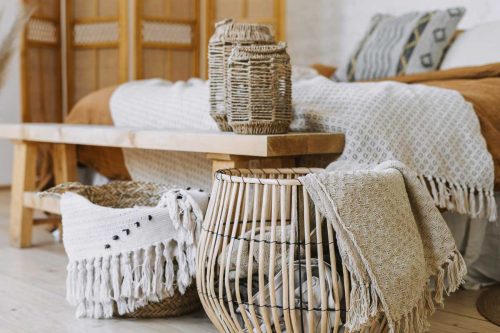Polymer clay is an easy craft to make a number of things out of and is suitable for all ages! Instead of buying a large amount of different colored clays, why not draw on them instead for more personalization? That brings you to the questions: can you draw on the clay and which pens will give you the best results? We've done the legwork for you to bring you the answer.
Polymer clay can be easily drawn on with a large selection of pens and markers. There is a variety of brands and each will specify whether it's best to draw on the clay before or after baking, but typically you'll be drawing on them after baking. Suitable pens and markers include:
- Copic
- Posca
- Sharpies
- Acrylic paint markers
- Prismacolor
- Speedball ink
- Tombow
- Micron
Using pens on clay can mean being able to write clearly on them too, which is great for special moments you want to remember. Polymer clay is often baked to harden and then painted, however, there are some pens you can add beforehand for special effects. Keep reading to learn about the pens you'll be able to use for your next project!
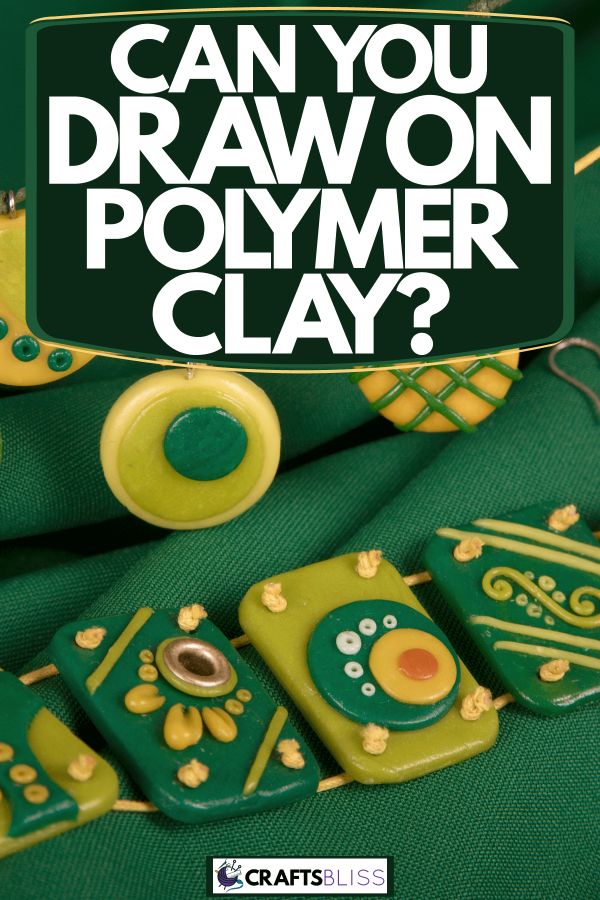
Do you draw on clay before or after baking?
In most cases, you'll be drawing on clay after baking it. Since there are so many paint pens to choose from, make sure to read each package carefully for their guidelines. To ensure the longevity of the paint, use a clear finishing spray afterward to lock in the colors.
There are a number of pens on the market suitable for polymer clay. Below is an expanded list of the best markers to use on this type of clay. Each comes with their advantages and disadvantages and fall within a price range for everyone.
1. Copic
- Double-ended for fine and bold work
- An expansive amount of colors
- Top-end of the price
- Non-toxic
- Can be translucent
- Marker nips are replaceable
Click here to view this Copic Marker set on Amazon.
2. Posca
- Vivid colors
- Matte finish
- Odorless
- Mid-range priced
- Not refillable
Click here to view this Posca Marker set on Amazon.
3. Sharpies
- Thick and thin tips
- Permanent
- Fast drying
- A large number of colors
- Fade to purple after awhile
Click here to see these Sharpie Paint Markers on Amazon
4. Acrylic paint markers
- Available in a wide range of brands
- Low to high price spectrum
- Water-based
- Metallic finish option
- Multiple nip tip sizes
- Permanent once dry
Click here to view these Amsterdam Acrylic Markers on Amazon.
5. Prismacolor
- Dye-based alcohol ink
- Expensive
- Small and large tips
- Limited surfaces for mixed media
- Blendable
Click here to view this Prismacolor set on Amazon.
6. Speedball ink
- It will need to be used in a calligraphy pen or fillable vessel
- Water-based
- Fast drying
- Permanent
- Fair priced
- Flows easily
- Good for writing details
Click here to view Speedball India Ink on Amazon.
7. Tombow
- Watercolor effect
- Two flexible tips
- Water-based ink
- Can be used with stamps
- Not recommended for elementary ages
- Larger sets can get pricey
Click here to view this Tombow marker set on Amazon.
8. Micron
- Fade-resistant
- Archival-quality
- Budget-friendly
- Solvent-based
- Good for small details
- Single pigment for consistent color
Click here to view this Micron set on Amazon.
What pens can you use on polymer clay?
As you can see, there are water-, alcohol-, and solvent-based pens. These classifications will determine how to clean up each type of pen and how well they last. Acrylic paint pens are often the first choice for crafts since they are water-based and safe for all ages.
Water-based
Water-based markers are a combination of ink and water. This mixture is odorless, safe for children, and can be cleaned up with water and soap. You may want to add a sealing finish to the project for fade protection and paint durability. Examples include Crayola, Tombow, and any acrylic paint markers.
Alcohol-based
These types of markers will be made up of ink and alcohol. The alcohol makes the ink semi-permanent but adds a strong scent to it. For example, Sharpies and Copic markers are alcohol-based. Pens of this sort are waterproof but can be cleaned off with another alcohol-based solvent.
Solvent-based
Unlike the former two, solvent-based pens are made from mixing ink and xylene or butyl acetate. These additives are what make the ink flow smoothly and adhere the ink to the surface. Due to its chemical base, it does have an odor and is long-lasting. Brands that are solvent-based are Molotow, Pebeo, and Sharpie oil-based markers.
How do you write on clay?
There are some creative ways to add writing to your clay artwork. The first can be to use a fine-tipped pen to write on top of the clay and its painted surface. When using bottled ink with no pen, use a fillable brush pen or calligraphy pen to house it in and write.
Or you can use stamps! Either color the stamps with your wide-tipped markers or brush on stand-alone ink. Then place and press the stamp onto the desired area. A wild card way to write on clay would be to carve it while it's still wet. Layer two different colors on top of each other and then carve out the top layer to show the second color underneath.
Do Posca pens work on clay?
Posca pens will work on clay, but should not be used for any projects meant to hold food. This brand of pens works best on clean and completely dried clay surfaces, so they can be applied after baking. If the color isn't deep enough for you, you'll be able to add more coats to each dried layer.
One of the great things about Posca is that you can also apply it before baking. Once you paint the clay and bake it, the paint will become permanent. If it's painted afterward, you'll still be able to wash off the paint if it didn't turn out the way you imagined.
Watch this video for some tips on using Posca pens:
Can you use ink on polymer clay?
Ink is a versatile medium that can be used in a lot of mixed media projects, including polymer clay. A majority of inks are pigment dye-based and will give you opaque colors. Depending on which brand is bought, some can be permanent air-drying or require to be baked.
Ink mediums give you a wide range of creativity in terms of finishes. There are chalk, glossy, and matte finishes for ink. It can stain the porous surfaces differently every time, so you'll be able to have unique creations each time!
Can you bake polymer clay on canvas?
When baking clay, use a flat and even surface. Stretched canvas may not be stiff enough to be used as a baking base for polymer clay. To add clay onto a canvas for a mixed media project, bake them beforehand on an even surface and baking sheet. Then, gently sand off the area of the canvas for better surface tension. Most super glues will be able to hold the clay piece in place.
Overall
Polymer clay has a porous surface and can be drawn on with pens and markers. Acrylic paint pens are a popular choice for drawing on clay, but you can also choose from a number of pens that are water, alcohol, or solvent-based for new and interesting effects. Clay is an awesome pick for an easy project, plus all ages are welcome to try! Check out these other great posts below:

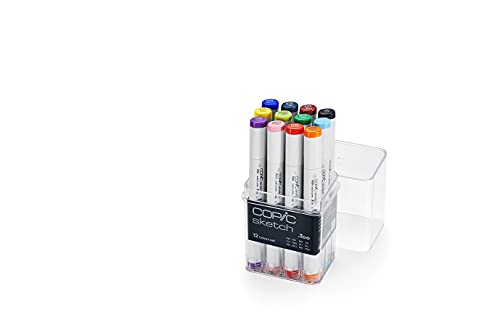







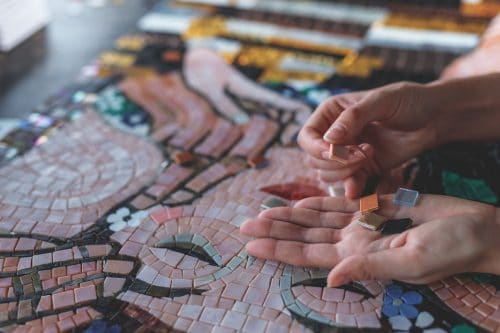

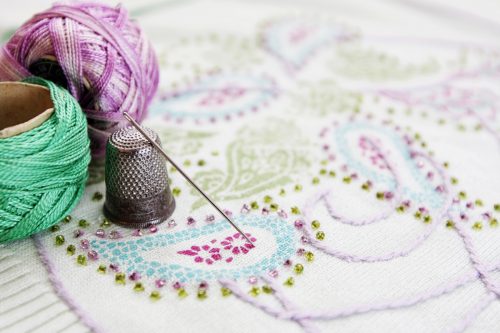

![Read more about the article Can You Quilt Without a Sewing Machine? [Here’s How]](https://craftsbliss.com/wp-content/uploads/2020/11/Sewing-a-quilt-with-quilting-machine-500x333.jpg)
